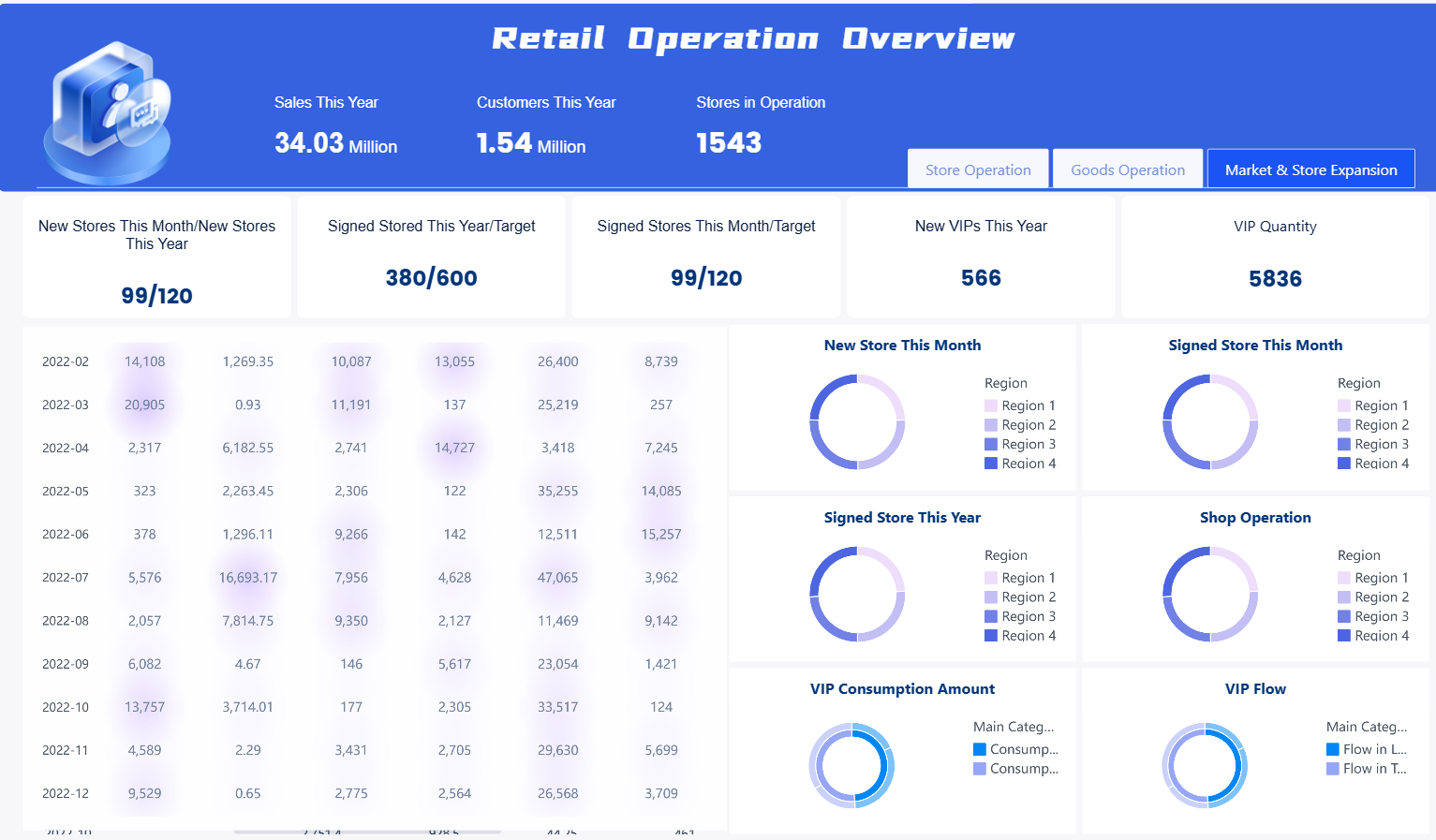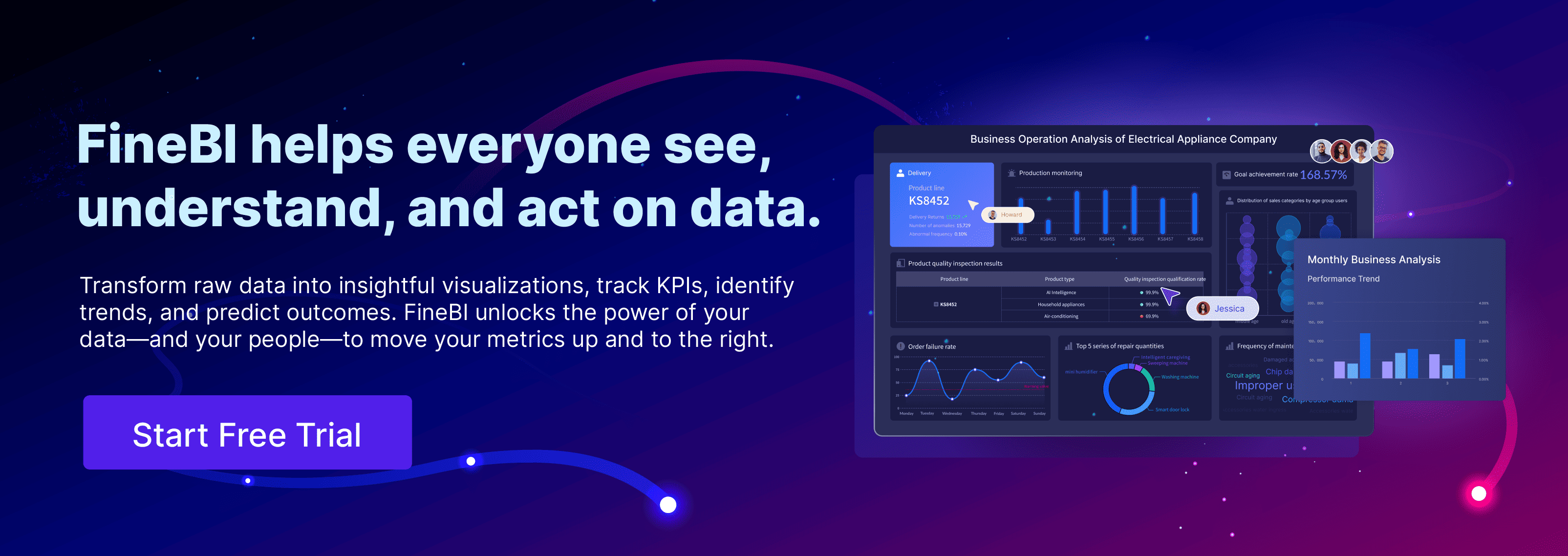Want to boost sales fast? Smart retail merchandising can make it happen. Imagine moving a product to a better shelf and watching sales jump by 79%. Even a simple update to your store’s signage could drive retail sales up by 10% or more. Of course, you face real challenges—like limited space, inventory headaches, and fast-changing trends.
- Cramped shelves confuse shoppers.
- Inconsistent layouts hurt your brand.
- Manual processes slow you down.
Ready to try something new? Let’s get you started with tips you can use today.
Key Takeaways
- Know your customers well to tailor product displays and promotions that match their needs and preferences.
- Use data tools like FineBI to track sales, manage inventory, and adjust your merchandising strategy in real time.
- Organize your store layout and product placement to guide shoppers smoothly and highlight key items at eye level.
- Create fresh, eye-catching displays and use lighting and signage to attract attention and boost impulse buys.
- Collect customer feedback regularly and test new ideas to keep improving your merchandising and increase sales.
Retail Merchandising Strategies
Know Your Customer
You can’t build a winning merchandising strategy if you don’t know who shops in your store. The best retailers start by understanding their customers inside and out. When you know what drives your shoppers, you can highlight what customers want and create displays that speak directly to them.
Here’s how top-performing retailers get to know their audience:
- They study customer profiles to tailor product selection and merchandising.
- They segment shoppers by age, gender, family status, location, and even interests.
- They use loyalty programs and purchase history to spot trends and preferences.
- They collect feedback through surveys, focus groups, and even social media.
Let’s look at how some brands do it:
| Segmentation Type | Retailer Example | Merchandising Strategy Description |
|---|---|---|
| Gender-based | Tommy Hilfiger | Runs gender-specific pop-ups and campaigns to boost sign-ups and retargeting. |
| Family-status | Gap | Targets moms with kids using family-oriented products and influencer campaigns. |
| Size-based | Girlfriend Collective | Restocks plus-size products based on customer size preferences. |
| Geographic | Uniqlo | Promotes weather-relevant clothing for different regions. |
| Behavioral (purchase) | Gregory’s | Sends feedback campaigns to recent buyers to improve retention. |
| Psychographic (interest) | Nike | Highlights gym gear to fitness enthusiasts with interest-based campaigns. |
| Micro-segmentation | Various retailers | Uses analytics to deliver hyper-personalized recommendations and content. |
When you segment your customers, you can personalize your merchandising strategy. You’ll know which products to promote, what displays to create, and how to connect with each group. This approach leads to higher satisfaction, more loyalty, and bigger sales.
Tip: Regularly update your customer segments. People’s needs and preferences change fast, especially in retail.
Data-Driven Insights with FineBI
You don’t have to guess what works. Data-driven merchandising insights give you a clear path to success. FineBI from FanRuan makes it easy to collect, analyze, and act on customer data—all in one place.
Here’s how you can use FineBI to power your merchandising strategy:
- Connect all your sales, inventory, and customer data sources.
- Build dashboards that track sales by product, category, and time period.
- Segment your audience using membership management tools, so you can target promotions and offers to the right shoppers.
- Analyze which displays and product placements drive the most sales.
- Monitor inventory in real time to avoid stockouts and overstock.
With FineBI, you can:
- Spot trends before your competitors do.
- Personalize promotions for each customer segment.
- Adjust pricing and inventory based on real-time sales data.
- Measure the impact of every merchandising strategy you try.
Retailers who use FineBI have seen a 20% jump in engagement and conversion rates. They keep popular items in stock, reduce waste, and boost profits with dynamic pricing. Teams work better together because everyone sees the same performance metrics.
Note: FineBI’s dashboards are easy to use. You don’t need to be a data expert to get powerful merchandising insights.
A strong merchandising strategy uses both what you know about your customers and what your data tells you. When you combine these, you create effective merchandising that feels personal and drives results.
- Use analytics to understand what sells and why.
- Test new displays and promotions, then measure the results.
- Keep your merchandising strategy flexible. Update it as trends and customer needs change.
Retail merchandising isn’t just about filling shelves. It’s about creating an experience that makes shoppers want to buy—and come back for more.
Store Management in Retail Merchandisng
Store Layout Essentials
When you think about how to merchandise your store, start with the basics: your store layout. The way you organize your space shapes how customers move, what they see, and how much they buy. Most shoppers care about the overall experience, not just the products. In fact, 76% say atmosphere matters more than what’s on the shelves.
Here are some essentials for an effective merchandising layout:
- Decompression Zone: Give shoppers a few feet of open space at the entrance. This helps them adjust and get comfortable before they start shopping.
- Traffic Flow: People usually move in an anticlockwise direction. Place high-value or seasonal items along this path to catch their attention.
- High-Traffic Zones: Focus on the front of your store and main aisles. Use these spaces for promotions and new product displays.
- Convenience: Make it easy for customers to find popular items. Keep high-demand products in accessible spots.
- Sensory Elements: Use lighting, music, and scent to create a welcoming mood. These cues can make shoppers stay longer and buy more.
Tip: Keep your space organized and clutter-free. Apply the 5 S’s—Sort, Set in order, Shine, Standardize, Sustain—to keep your store running smoothly.
Product Placement Tactics
Smart product placement can turn browsers into buyers. You want to use every inch of your space to drive sales and create an engaging shopping experience.
Try these proven tactics for effective merchandising:
- Place products at eye level. Shoppers notice items that sit right in their line of sight.
- Use endcap displays at the end of aisles. These spots grab attention and boost sales.
- Group products by use. For example, put chips next to dips or pasta with sauces. This makes shopping easier and encourages customers to buy more.
- Bundle related items with a discount. Shoppers love a good deal and will often grab both.
- Position small, convenient items like gum or hand sanitizer at checkout. These impulse buys can add up fast.
- Create custom, eye-catching product displays in high-traffic areas. This helps your brand stand out and draws people in.
- Rotate seasonal and trend-based displays to keep your space fresh and exciting.
If you want to maximize your results, use data to track which product placement strategies work best. Analyze customer behavior and adjust your displays to match what shoppers want.
Note: The right mix of store layout and product placement can boost sales, improve customer satisfaction, and make your retail space a destination.
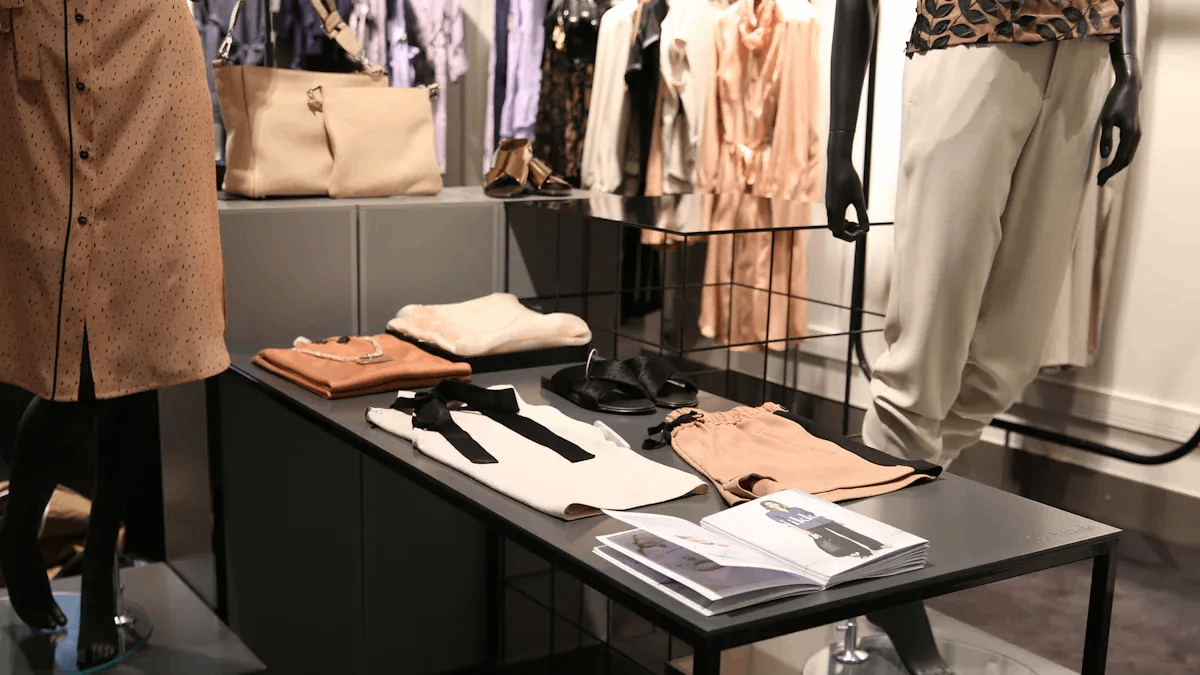
Visual Retail Merchandising Tips
Eye-Catching Displays
Want to know how to merchandise your store so shoppers stop and look? Start with eye-catching displays. These displays do more than just show off products—they tell a story and invite people to explore. When you use the right visual merchandising tips, you can boost dwell time and drive more impulse buys.
- Group products in sets of three. The Rule of Three creates a balanced look that draws attention and encourages customers to check out more items.
- Try the Pyramid Principle. Place the largest item in the center and smaller ones on the sides. This shape pulls the eye in and adds interest.
- Place key items at eye level. Shoppers notice what’s right in front of them, so use this space for your bestsellers or new arrivals.
Research shows that 60% of in-store purchases are unplanned and influenced by effective visual merchandising. Well-designed product displays in high-traffic areas can increase foot traffic by up to 25% and sales by 10%. Custom showcases and modern lighting can also make your store feel premium, increasing shopper trust and the chance of a sale.
Lighting and Signage
Lighting and signage play a huge role in retail merchandising. The right lighting highlights your products and sets the mood. Warm lighting creates comfort, while bright lights add energy and urgency. LED lighting in displays can boost product interest by 20% and make your store look modern.
Here’s how to use lighting and signage for maximum impact:
- Use LED signs at entrances and windows. These grab attention and create a strong first impression.
- Add compelling signage near high-traffic areas and checkout counters. Clear, bold signs help customers find deals, new arrivals, and must-have items fast.
- Highlight price points and promotions with larger, easy-to-read signs. This attracts value-conscious shoppers and speeds up decision-making.
Color psychology in signage also matters. Red and orange create urgency, while blue and green build trust. When you combine smart lighting with strategic signage, you help customers navigate your store and make buying decisions quickly.
Note: Effective visual merchandising uses both lighting and signage to create a seamless, engaging shopping experience.
Customer Experience in Retail Merchandisng
Store Flow and Navigation
When you walk into a store, you want to feel comfortable and find what you need without getting lost. That’s why store flow and navigation matter so much for the retail customer experience. A smart layout guides you through the space, making it easy to spot related items and discover new products. For example, when tops sit near pants and accessories, you can put together an outfit in minutes. Bookstores often lead you from bestsellers to hidden gems, making every visit feel like an adventure.
A well-designed store layout does more than just look good. It helps you move smoothly from one section to another, reduces confusion, and keeps you engaged. When stores use planograms to place popular items at eye level, you notice them right away. This setup encourages impulse buys and makes your shopping experience more enjoyable. Research shows that 64% of shoppers leave stores that feel messy or hard to navigate. Clear pathways and organized displays keep you happy and coming back for more in-store experiences.
Tip: Stores that update their layouts for seasons or special events keep the shopping experience fresh and exciting.

Cleanliness and Organization
Nothing ruins in-store experiences faster than clutter or dirt. Cleanliness and organization play a huge role in how you feel about a store. When you see spotless floors, dust-free shelves, and neatly arranged products, you feel welcome and safe. A clean store builds trust and makes you want to stay longer. You can find what you need quickly, which makes the whole shopping experience smoother.
Stores that stick to regular cleaning schedules show they care about your health and comfort. Organized displays help you make decisions faster and reduce stress. You’re more likely to return to places that look professional and inviting. Clean, well-kept spaces also lower the risk of accidents, making your visit worry-free.
A great customer experience starts with the basics: easy navigation and a clean, organized environment. When stores get these right, you enjoy shopping more and are more likely to come back.
Leveraging Technology in Retail Merchandising
Technology is changing how you approach your merchandising strategy. Today, you have tools that help you make smarter decisions, move faster, and keep your customers happy. Let’s see how you can use the latest tech to take your retail merchandising to the next level.
Real-Time Analytics with FineBI
Imagine knowing exactly what’s happening in your store right now. FineBI gives you that power. You can track your sales by sku, see which products move fastest, and spot trends before anyone else. Real-time analytics means you don’t have to wait for end-of-day reports. You get instant answers.
Below is a Sales Director Real-time Dashboard:
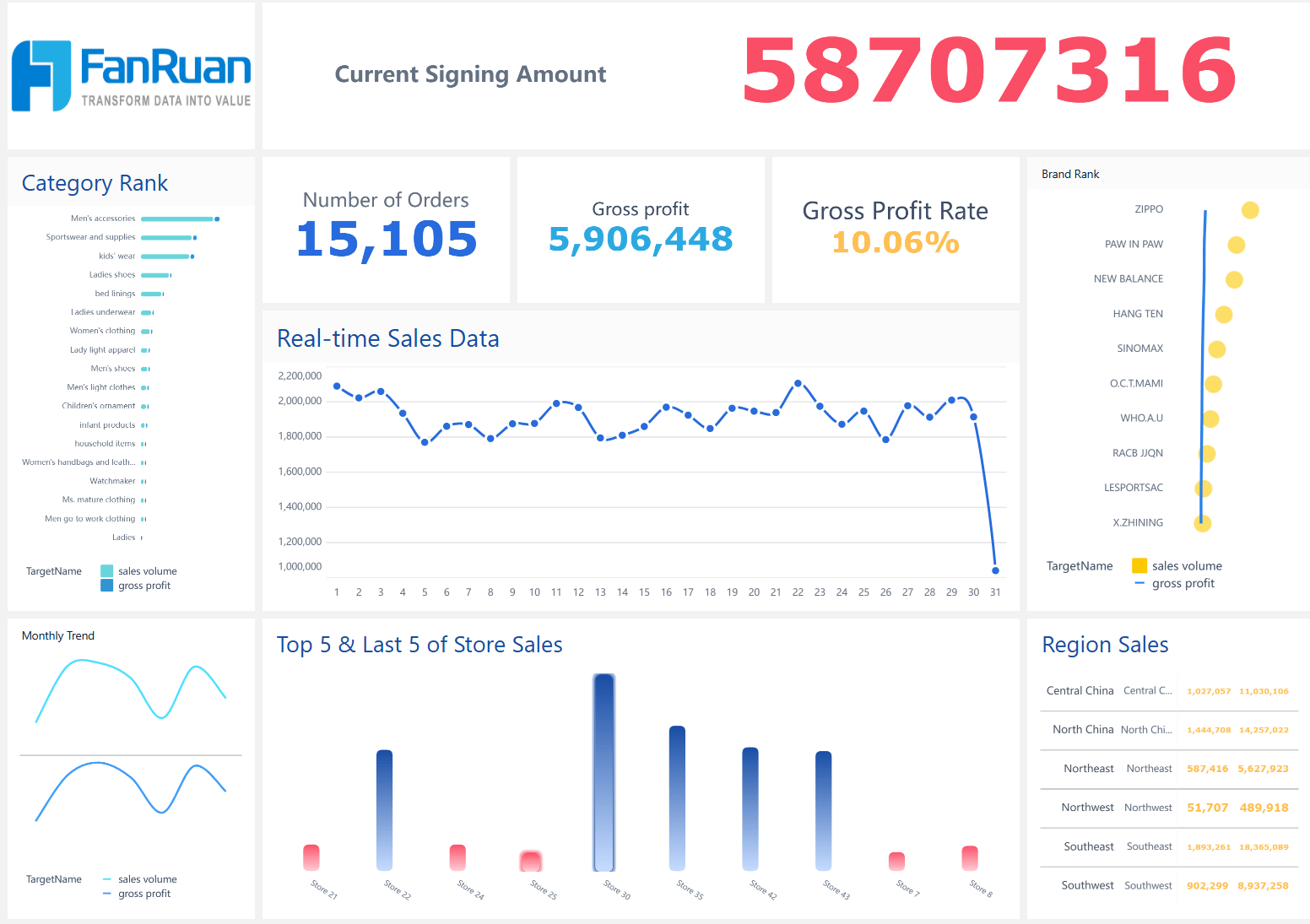
FineBI connects to all your data sources—big data platforms, SQL databases, Excel files, and more. You see everything in one place. Here’s how FineBI helps you with your merchandising strategy and inventory management:
| Feature Category | What You Get | Why It Matters for Merchandising Strategy |
|---|---|---|
| Data Integration | Connects to 30+ data sources, including sales and inventory systems. | Gives you a complete view of your business. |
| Data Modeling | Combines sales and inventory data for joint analysis. | Lets you see how product movement affects stock levels. |
| Data Management | Offers shared dashboards and personal analysis spaces. | Keeps your team on the same page. |
| High-Performance Engine | Processes large datasets quickly with memory computing and ETL logic. | Delivers fast, up-to-date insights. |
| Incremental Data Updates | Updates sales and inventory data with minimal delay. | Ensures you always work with the latest numbers. |
| High Concurrency | Handles many users at once with failover and load balancing. | Everyone gets real-time access, even during busy times. |
| Dashboard Visualization | Lets you build and share dashboards easily. | Makes it simple to spot trends and act fast. |
With FineBI, you can:
- Monitor sales and inventory management in real time.
- Adjust your merchandising strategy on the fly.
- Share live dashboards with your team for quick decisions.
- Avoid stockouts and overstock by acting on current data.
Tip: Use FineBI’s dashboards to test new displays or promotions. You’ll see what works best, right away.
You don’t need to be a tech expert. FineBI’s drag-and-drop tools make it easy for anyone to build dashboards and analyze data. You can focus on what matters—growing your retail sales and keeping your customers coming back.
Data Integration for Smarter Merchandising
Smart merchandising strategy starts with good data. But your data lives in many places—POS systems, online stores, inventory software, and even spreadsheets. When you bring all this data together, you unlock powerful insights.
FineBI helps you integrate multiple data sources into a single, unified view. This makes your merchandising strategy stronger and your inventory management more efficient. Here’s what happens when you connect your data:
- You get a single source of truth for your business.
- You can optimize stock levels and improve forecasting.
- You align your merchandising strategy with real customer demand.
- You reduce waste and avoid both stockouts and surplus inventory.
- You support dynamic pricing based on real-time inventory and demand.
- You measure the impact of promotions and campaigns by product.
- You understand your customers better and personalize your marketing.
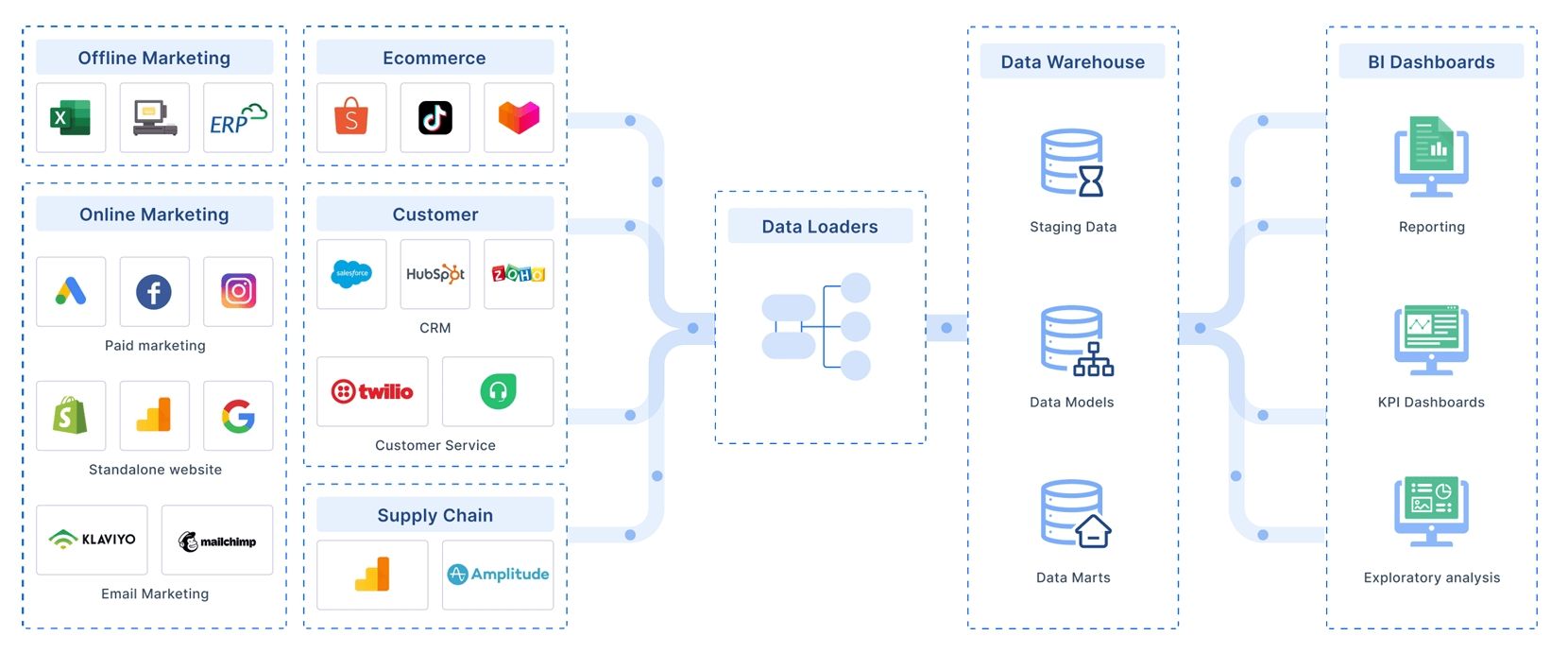
Retailers who use integrated data see big results. They make better decisions about what to stock, how to price, and when to run promotions. They also respond faster to market changes. For example, some retailers use data sharing to improve product assortment and allocation, which leads to more relevant offerings and higher profits.
Note: Businesses using data analytics for retail merchandising report up to 93% higher profits and 115% higher ROI.
When you use FineBI with these technologies, you get a merchandising strategy that’s not just smart—it’s future-proof. You can adapt quickly, serve your customers better, and grow your business with confidence.
Tip: Start by integrating your most important data sources. As you see results, add more systems to get an even clearer picture.
Technology gives you the edge in retail merchandising. With real-time analytics and integrated data, you can make every decision count.
Seasonal and Thematic Retail Merchandising
Promotions and Events
Seasonal and thematic campaigns can turn your store into a destination. When you tap into holidays, local events, or trending themes, you connect with shoppers on a deeper level. You create excitement and give people a reason to visit, even if they didn’t plan to buy.
You might host a product demo, a DIY workshop, or a pop-up event tied to a holiday. These experiences get people talking and sharing on social media. Community events, like teaming up with local artists or joining a neighborhood festival, help you build strong local ties. Customers love exclusive in-store promotions and limited-edition products. These special offers make them feel like insiders and encourage repeat visits.
Loyalty programs also work wonders. When you reward shoppers with discounts or freebies, they come back more often. Studies show that 60% of shoppers become more loyal after joining a rewards program. Limited-time sales and themed promotions create urgency. People don’t want to miss out, so they buy now instead of waiting.
Tip: Use digital tools like QR codes or interactive displays to make your events even more engaging. Shoppers love tech that makes their experience fun and memorable.

Keeping Displays Fresh
You want your store to feel new every time someone walks in. That means you need to rotate displays and keep things interesting. If you use the same setup for too long, customers stop noticing it. Experts recommend that you change displays monthly to match new trends, seasons, or events.
Small updates every few weeks—like swapping out a few products or adding new props—keep your space lively. During busy times, like holidays or summer, refresh your displays even more often. Many retailers use a display calendar to plan minor weekly tweaks and bigger monthly changes.
- Update window displays every 2-4 weeks.
- Refresh seasonal displays at least every three months.
- Make small changes every six weeks to avoid display fatigue.
Regular updates boost sales and keep shoppers engaged. Studies show that seasonal display changes can increase purchases by 34%. When you align your displays with what’s happening in your shoppers’ lives, you make your store feel relevant and exciting.
Note: A dynamic store environment encourages longer visits and more impulse buys. Keep your displays fresh, and your customers will keep coming back.
You’ve seen how strategic product placement, fresh displays, and smart use of technology can transform your merchandising strategy. FineBI from FanRuan helps you track sales, test ideas, and avoid common pitfalls like cluttered displays or outdated layouts. Start by trying one best practice today—maybe adjust your shelf heights or refresh your signage. Measure your results, listen to feedback, and keep refining your approach. When you focus on continuous improvement, you create a shopping experience that keeps customers coming back.
Continue Reading about Retail Management
What is Retail Industry Data Analysis and Why It Matters
FAQ

The Author
Lewis
Senior Data Analyst at FanRuan
Related Articles
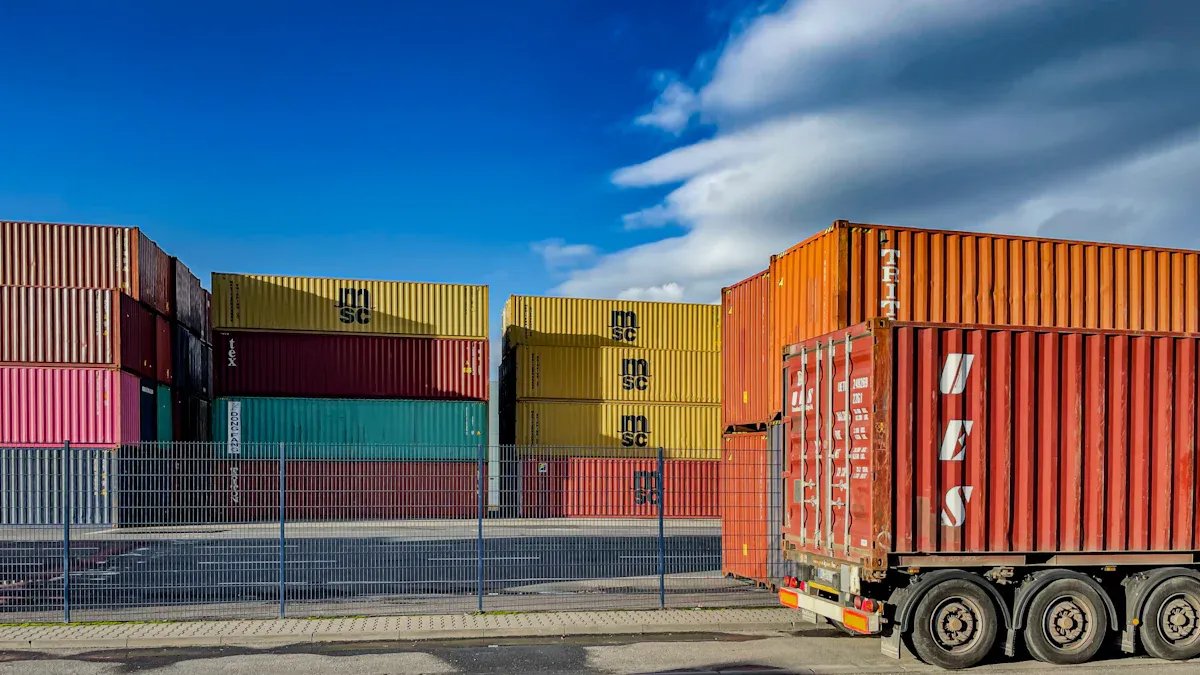
Top 10 Supply Chain Visibility Tools for 2025
Compare the top 10 supply chain visibility tools for 2025 to enhance real-time tracking, integration, and predictive analytics for efficient operations.
Lewis
Oct 29, 2025
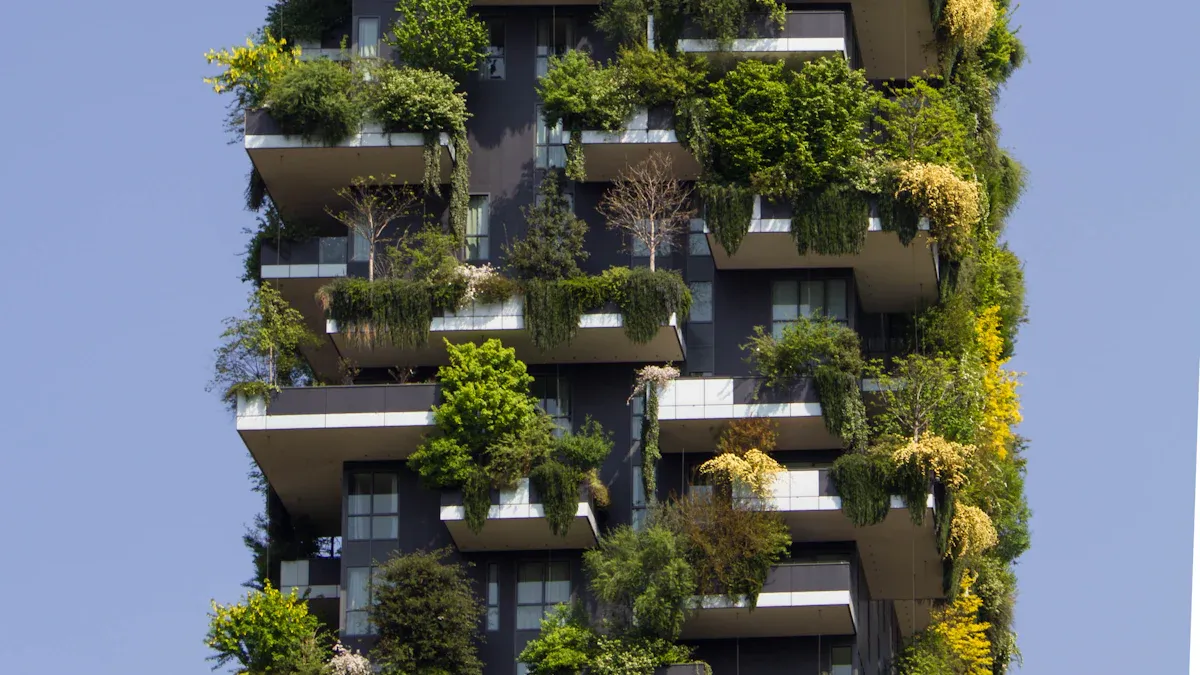
Carbon Emission Management Explained and Why It Matters
Carbon emission management involves tracking and reducing greenhouse gases to meet regulations, cut costs, and protect the environment.
Lewis
Oct 12, 2025

What is Green Manufacturing and Its Key Principles
Green manufacturing uses eco-friendly processes to boost energy efficiency, reduce waste, and promote sustainable materials in production.
Lewis
Oct 10, 2025
